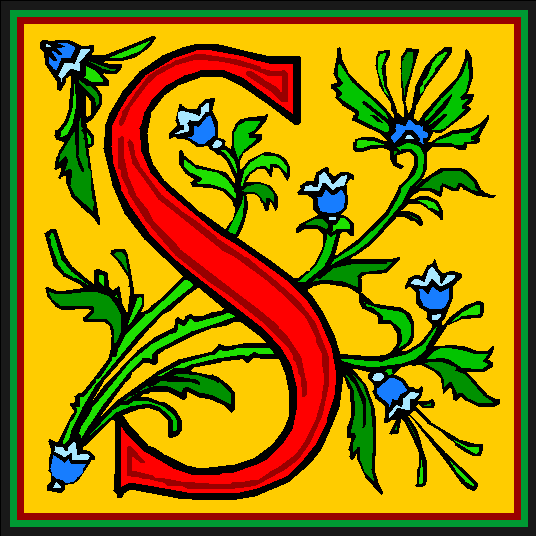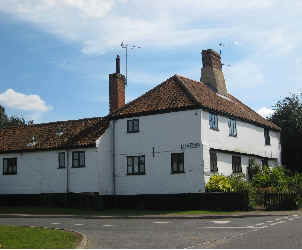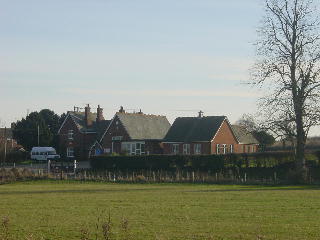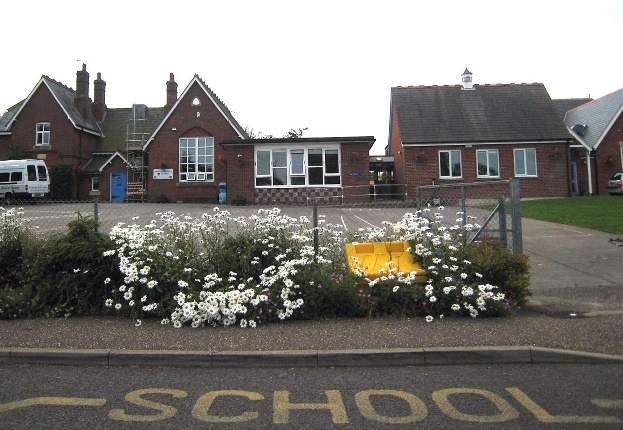History Alphabet
 is
for Bawburgh School.
is
for Bawburgh School.
|
The School's idyllic position, in 2004. |
Bawburgh School has been a constant presence in the Village since 1876. Its present lively and successful ambience is far removed from the early days of dismal classrooms and low educational standards. The first headmistress, a Miss Ann Rix, had 54 pupils, and the help of only one visiting teacher. In those days, the Vicar and senior pupils would lend a hand, but within a few years pupil numbers did increase, although pupil attendances were a problem throughout the early years. Sixteen years after its opening, in 1892, a new headmaster, Mr. Frederick Jackson, was appointed, and he successfully brought the school up to the necessary standards demanded by the then Norfolk Education Committee, who took over responsibility in 1905. This also brought improvements to the inadequate building. Mr. and Mrs. Jackson were in harness, and in residence at the School house for 33 years, until 1925, when a softer regime under Mr. Jack Steed arrived, and he was to take the helm for another 29 years, until 1954. After these two driving forces of Bawburgh education, there have been many changes of headship, but when Mrs. Baldwin arrived in 1987, the School had just been through a fight to remain open due to low pupil numbers, so much that a Bawburgh School Defence Committee had been formed, and successfully saved the School. Eighteen years after Mrs. Baldwin's appointment, and campaign for more space, a new Hall was opened at the school on 14th December 2005.
|
2007 |
The Jacksons (1892-1925) not only lived in the Schoolhouse, but were attributed with the improvement of conditions and the education of their charges, who had grown in number to 77, in spite of attendance/truancy being a continuing problem. There was a fence to enable the schoolhouse privacy, and there was an extension built during the “Harvest Holidays” of 1905—just after Norfolk County Council had become responsible for its upkeep. Pupil numbers remained about the same during this time, reaching 88 in 1919, but as time went on it needed 19 evacuees to boost numbers in 1939 and 8 travellers in 1978 to boost the roll. Then, by the time Mrs. Baldwin arrived in September 1987, pupil numbers had dropped to 36. Since then numbers have increased considerably.
S is also for Mr. A.J. Steed.
Mr. Jack Steed was Headmaster at Bawburgh School for 29 years, 1925 - 1954. After the strict regime of the Jacksons, he was well liked. Whilst living in Bawburgh, at the Schoolhouse, Mr. Steed was also a preacher at the Chapel. He had two daughters, and the family are well remembered in the village, for their presence which spanned a time of great change, up until the mid-Fifties.
S is also for two past Vicars of Bawburgh
The Rev Percy Sturdy, was
vicar at Bawburgh 1960-1963, and when the Parish joined Cringleford in 1984
the Rev. David Sturdy arrived, providing some stability and continuity for
ten years, until 1994. For more see
V
is for the Vicars of Bawburgh.
S is also for Stocks Hill Corner

|
Now known as Corner Cottage (the door is actually on Hockering Lane) the landmark building on the corner of Stocks Hill and Hockering Lane, together with its neighbour Smugglers Cottage, was originally one. Originally dated 17th century, some remaining interior points of interest earned its Listed status, when the village became “conserved” in 1973. During the early part of the 20th century, however, the property was better known as Porretts, the butchers. But this was not a marbled refrigerated butchers shop; it had scolding baths for pigs, a back door instead of a counter, and the cellar under the front garden acted as the fridge! Horse and cart deliveries from Porretts were renowned and essential for the surrounding villages. When finally the two butchers of Bawburgh, became one, Reynolds Dobson, became Reynolds Porrett’s successor in Harts Lane, around 1921. Mrs. Porrett continued to live in the premises until the Floods arrived in 1956. The slaughterhouse facilities had to be removed to install a “modern” kitchen. The curiously named Smugglers Cottage then became separate and has changed hands more times, and often used as a quaint and desirable rented holiday cottage. Corner Cottage has since seen more attention and refurbishment, with the arrival of Elaine and John Stannard in 1993, who maintained the attractive and historic building to a high standard.

